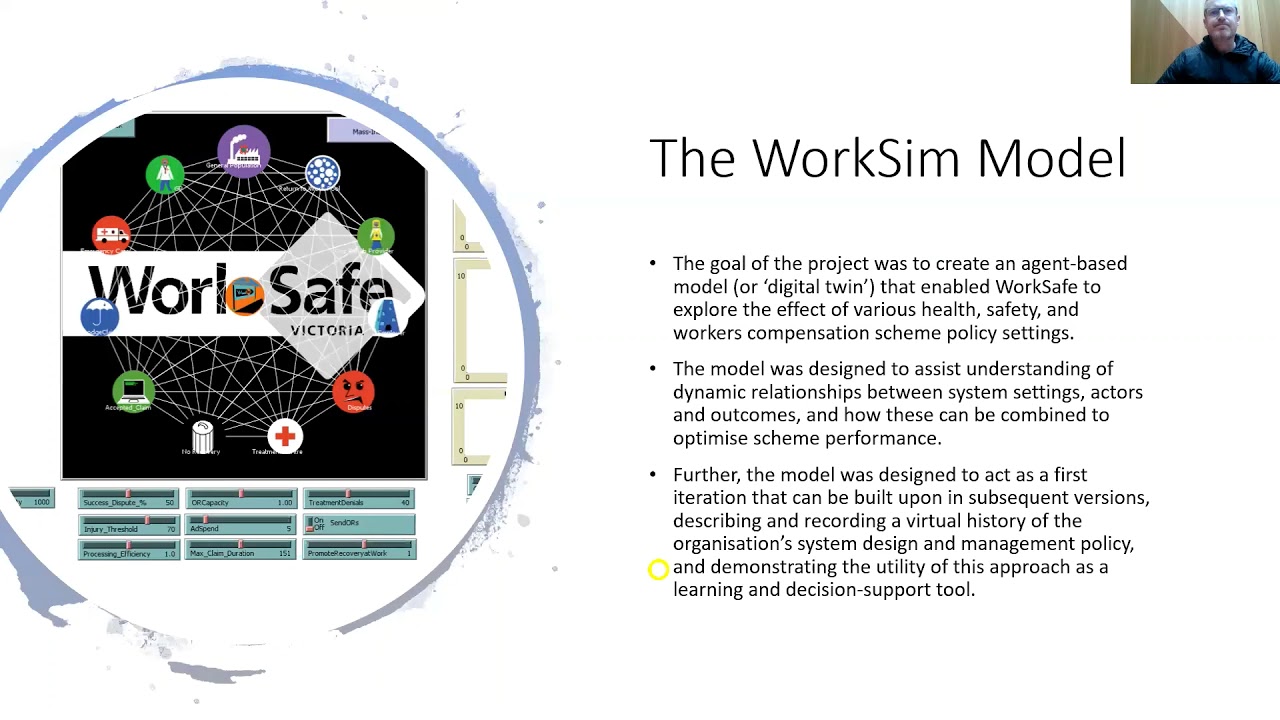The ability of injury rehabilitation and compensation systems to improve the health of injured people, meet their non-medical needs, and do so in a financially fair and reasonable manner are hallmarks of high-performance health systems (Murray & Frenk, 2000; World Health Organization, 2000). However, given the complexity of health systems and the safety-critical nature of their work, conducting in-situ policy experiments with a mind to improving performance across these criteria is both practically and ethically challenging.
Manifold personal, social and environmental factors can affect outcomes for clients injured in workplace accidents, and it is the role of the compensation and rehabilitation system to optimise injured clients’ recovery as far as possible. In this regard, workplace injury compensation schemes such as WorkSafe provide an important social benefit; they act to prevent workplace injuries, assist injured workers to recover, and reduce the costs associated with injury for individual workers, organisations, and the broader community through effective and efficient management of a common pool insurance model.
The benefits of this combined prevention and rehabilitation model, however, can only ever be as good as the management of the system, itself. There are serious potential consequences of workplace injury prevention and rehabilitation system-generated mistakes and mis-management. On the prevention side, this can include failure to recognise or reduce hazards through education, inspection and enforcement activities leading to injury. On the rehabilitation and recovery side they can include inefficient or adversarial injury rehabilitation system management processes, failure to provide access to timely treatment, or failure to find or support suitable return-to-work roles for injured workers. For organisations such as WorkSafe that hold dual roles of prevention and recovery, errors made on one side of the equation also compound to affect the organisation’s ability to effectively carry out functions on the other.
Management and policy settings are therefore important for achieving high performance. However, those that lead to positive outcomes for organisations such as WorkSafe are not always clear. Combined with the practical inability of health systems to neatly isolate clients into defined intervention and comparison groups to effectively test management interventions, this means that health system managers are often working in a challenging policy environment dominated by decisions made on the basis of experience, external advice or educated guesses rather than evidence (Orton, Lloyd-Williams, Taylor-Robinson, O’Flaherty, & Capewell, 2011). What are the optimal policy settings for compensation and rehabilitation organisations to achieve the highest performance possible? How do trade-offs within the system operate? How can managers best respond to dynamic system challenges? How should management and policy responses change with changing circumstances and as a result of policies, themselves? Can computational modelling, policy simulators or ‘digital twins’ help in aiding better decision-making (Calder et al., 2018)?
This project developed a policy simulator for workplace safety and compensation system management, designed around the WorkSafe, Victoria scheme. The goal of the project was to create an iterative agent-based model (or ‘digital twin’) that enabled WorkSafe to explore the effect of various health, safety, and workers compensation scheme policy settings. The model was designed to assist understanding of dynamic relationships between system settings, actors and outcomes, and how these can be combined to optimise scheme performance. Further, the model was designed to act as a first iteration that can be built upon in subsequent versions, describing and recording a virtual history of WorkSafe system design and management policy, and demonstrating the utility of this approach as a learning and decision-support tool.
Dr Jason Thompson & Dr Camilo Cruz
University of Melbourne
Transport, Health and Urban Design Research Hub
Melbourne School of Design
